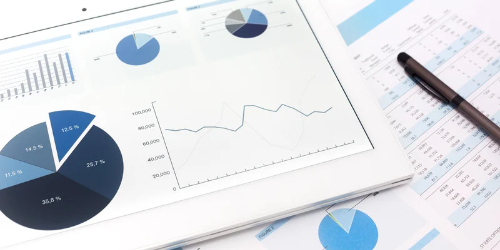PLATFORM

PLATFORM SERVICES
APPS
BUILT FOR SCALE

Sustainability data are generated at every step of the value chain. Recognizing, understanding, and appropriately preparing this data according to standards offers companies a real added value.
Because sustainability data not only opens up opportunities for improving a company's sustainability performance but also provides the opportunity to optimize business processes and establish forward-looking corporate governance.
What kind of sustainability data are generated in companies, and how can they be utilized?
Sustainability data in the "People" category includes information on working conditions, employee engagement, diversity, health and safety, supply chains and community impact. They are used to measure the social responsibility and sustainability of organizations and to develop improvement measures. This data enables an assessment of the impact on people and society.
Sustainability data in the "Planet" area includes information on energy consumption, CO2 emissions, water consumption, waste management, biodiversity and environmental impacts of the supply chain. They are used to measure the environmental performance of organizations and to develop environmentally friendly measures and strategies. This data enables an assessment of environmental impact and supports the promotion of sustainability.
Sustainability data in the "Profit" area relate to financial aspects such as financial performance, cost and efficiency measures, investments and financing, and risk management. They are used to assess the financial sustainability of companies and identify opportunities for value creation along the value chain. This data supports the integration of sustainability into business strategy and the creation of long-term profitable and responsible business operations.
Sustainability data is obtained from operational data, supply chain, human resources, finance and external sources. Different methods can be used to gather this data, from internal records to external databases.

Currently, there is generally no central digital system to capture and consolidate all sustainability data, making this information not easily accessible. Capturing and consolidating this data requires a great deal of effort. Often the existing information is already available, but distributed or not recognized as relevant sustainability data.
One challenge is to correctly aggregate the various data sources, including the individual legal entities within a company. It is also important to transform the data appropriately, taking into account the different record types and metrics.
Validation of the data ensures that they meet the quality standards. To ensure this, the required expertise and plausibility checks on the part of the responsible person are important. Clear documentation of data collection, aggregation and transformation is of great importance to enable comprehensible verification by third parties such as auditors.
Reporting is of great importance for compliance requirements as well as for transparency towards stakeholders. It includes complex reporting requirements such as the CRSD and requires a machine-readable format (XBRL). At the same time, reports should be attractively designed to make information about a company's sustainability easily accessible and convey authenticity.
ESG data alone are no longer sufficient to meet EU standards. They only provide a "single materiality" perspective, as they focus on the impact of external factors on the company, but do not include the impact of the company's own actions on the external environment. Therefore, ESG data addresses only a subset of sustainability.
In sustainability reporting, "double materiality" is important, i.e. both the impact of the company's actions on the external environment and the impact of external factors on the company itself. Consideration of this additional layer is linked to CSRD and requires appropriate consideration within Sustainability Information Management.
The United Nations has defined 17 Sustainable Development Goals (SDGs) that serve as non-binding guidelines to promote long-term peace and prosperity for the planet and its people. Although they were originally designed for states, businesses can use them as well. The SDGs allow companies to identify areas where they can make a positive impact to help achieve the goals.
The enterprise GLOSUS is granted by the German Federal Ministry for Economic Affairs and Energy and the European Social Fund as part of the EXIST program - University-based business Start-Ups.